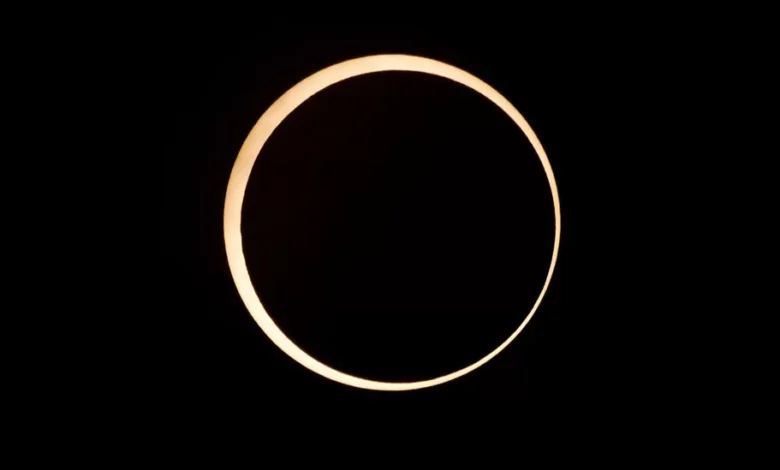Annular Solar eclipse 2023: Ring of fire to sweep Americas on Saturday

Stargazers and astronomers alike will be treated to a spectacular celestial event this Saturday – an annular solar eclipse.
This cosmic phenomenon will be visible in parts of the US, Mexico, and in South and Central America.
People across the US should see at least a partial eclipse, says Nasa.
An annular solar eclipse occurs when the Moon passes between the Earth and the Sun, blocking out most but not quite all of the Sun’s light.
It’s called an annular eclipse because just a thin ring, or annulus, of light remains visible.
“An annular eclipse only happens when the moon is at its furthest away point from Earth. In perspective to us on Earth, it doesn’t completely block out the light from the sun so instead you get this incredible ring of fire around the moon.
“Even though we get more excited about a total solar eclipse because you can see the Corona… it’s really far more rare to see an annular solar eclipse and so it’s a really cool thing to see” said Dr Nicola Fox, associate administrator for NASA’s Science Mission Directorate.
The path of the October 14 annular solar eclipse will span a wide area, offering different viewing experiences depending on your location.
Those within the path of annularity will witness the full ring of fire effect, while those in nearby regions will see a partial eclipse.
What times can you see the eclipse?
The annular solar eclipse begins in Oregon at 09:13 local time (17:13 BST), passes through California, Nevada, Utah, New Mexico and ends in Texas at 12:03 local (18:03 BST).
“The most important thing (for visibility) is to be where it is not cloudy. For the 2017 eclipse I was out in Nebraska, and it was cloudy. It never occurred to me that I wouldn’t see it because of the clouds,” Dr Fox said.
It’s essential to plan ahead and find a suitable viewing location away from city lights and tall buildings, ensuring a clear view of the sky where the eclipse will occur.
Many astronomy clubs and organizations arrange public viewing events, so check with local enthusiasts for opportunities to safely observe the eclipse.
How can you view the eclipse safely?
“With an annular eclipse because the sunlight isn’t completely blocked out, you have to use eclipse glasses no matter where you are” said Dr. Fox.
While witnessing a solar eclipse is an awe-inspiring experience, it’s essential to remember that looking directly at the Sun, even during an eclipse, can cause severe eye damage or blindness.
Anyone gazing skyward should only do so with the aid of protective viewing equipment, such as approved eclipse glasses or a pinhole projector.
Viewing any part of the bright Sun through a camera lens, binoculars, or a telescope without a special-purpose solar filter secured over the front of the optics can cause severe eye injury.









